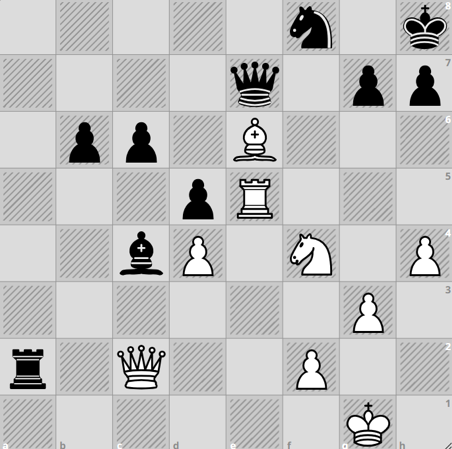Chess is a game of strategy and patience, but sometimes the most exciting moves come from the bold decisions that change the entire match. Sacrificing a piece may seem counterintuitive, but when done right, it can lead to a powerful advantage. In this post, we’ll explore the art of sacrifice in chess, from why it’s important to how to use it effectively—and finish with a bonus puzzle to show the brilliance of a well-timed sacrifice!
Why Sacrifice in Chess?
In chess, a sacrifice occurs when you intentionally give up a piece, often one of high value, to gain a greater strategic advantage. Sacrificing a piece can:
Sacrifices might seem risky, but they can turn the game in your favor when done at the right time.
When Should You Sacrifice?
Sacrifices are most effective when the timing is just right. It’s important to evaluate the position carefully before making any sacrifices. One key moment to consider sacrificing is when your opponent’s king is exposed or hasn’t castled yet. In such cases, a well-timed sacrifice can open up avenues for a devastating attack on the king.
Sacrifices can also be effective when you’re setting up for a checkmate, especially when you see a clear attacking pattern. Finally, sacrificing material to gain long-term positional advantage, such as controlling key squares or opening important lines, can also be a strategic move that pays off in the long run. The crucial factor is ensuring that the sacrifice leads to something more than just losing material.
How to Execute a Sacrifice
Executing a sacrifice requires careful thought and calculation. Here’s a simple guide:
- Evaluate the position: Analyze the board to identify weaknesses or tactical opportunities.
- Calculate variations: Think ahead and assess your opponent’s possible responses.
- Consider your king’s safety: Make sure your king is not left exposed after the sacrifice.
Sacrifices should be planned and purposeful. A poorly timed or reckless sacrifice can leave you in a worse position.
Bonus Puzzle: The Power of a Queen Sacrifice
Now, let’s test your skills with a puzzle that showcases the power of sacrifices.
Can you find the move that leads to a forced checkmate?
White to move:

Solution:
The answer is you need a Queen Sacrifice!
- Qxh7+!!
However, if you thought about it, then you must have gone through calculation of two variations of what would happen when you sacrifice it.
Think through both possible responses from Black:
In both cases, White wins with a forced checkmate.
Conclusion
Mastering the art of sacrifice in chess can take your game to the next level. By knowing when and how to sacrifice, you can gain an advantage, create threats, and surprise your opponent. Sacrifices add excitement and creativity to the game, so don’t hesitate to unleash them when the opportunity arises.
For more tips, lessons, and puzzles like this, check out The New England Chess School! We offer expert training to help you sharpen your chess skills and unleash your full potential on the board.
Happy playing!